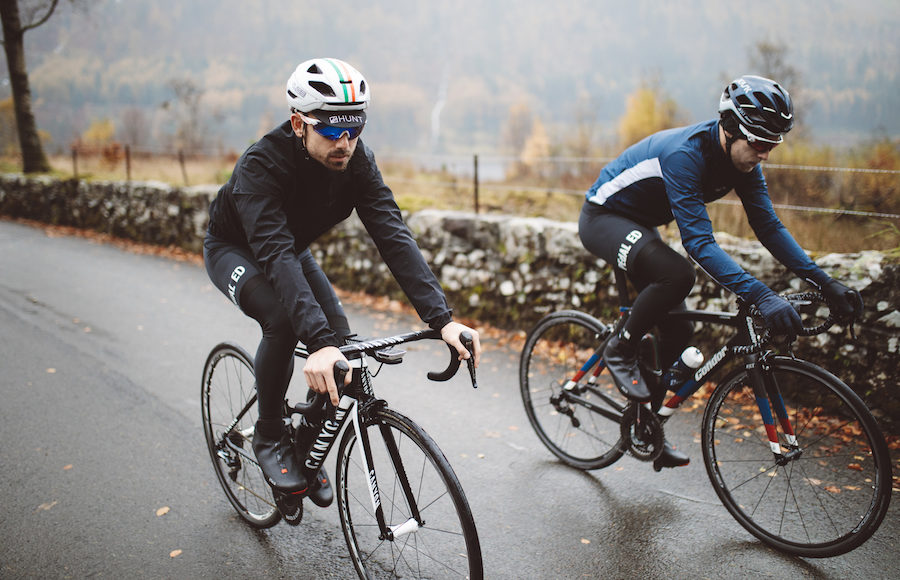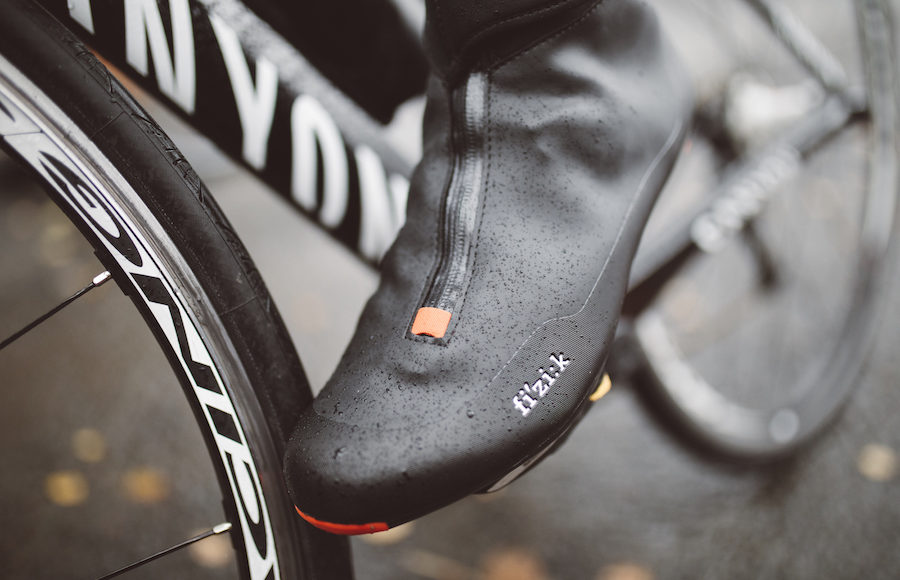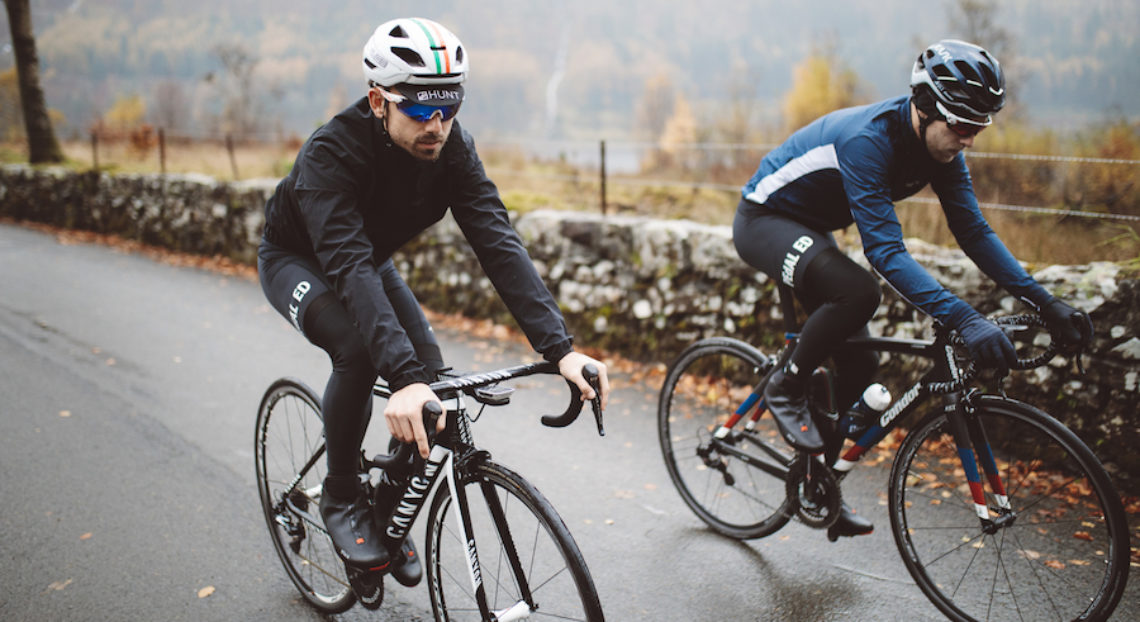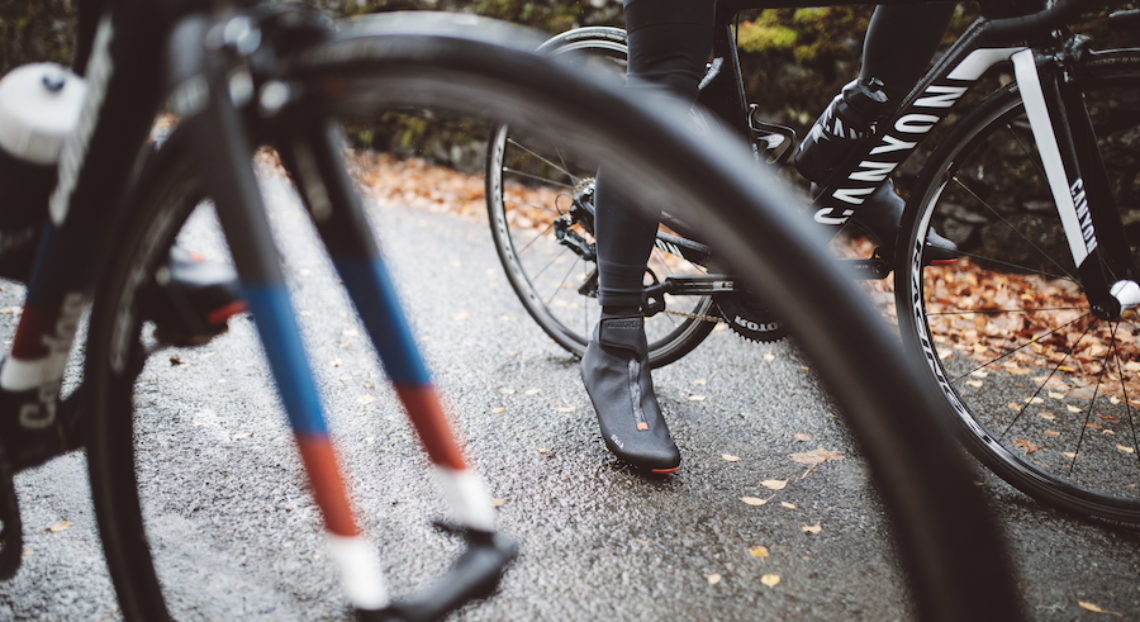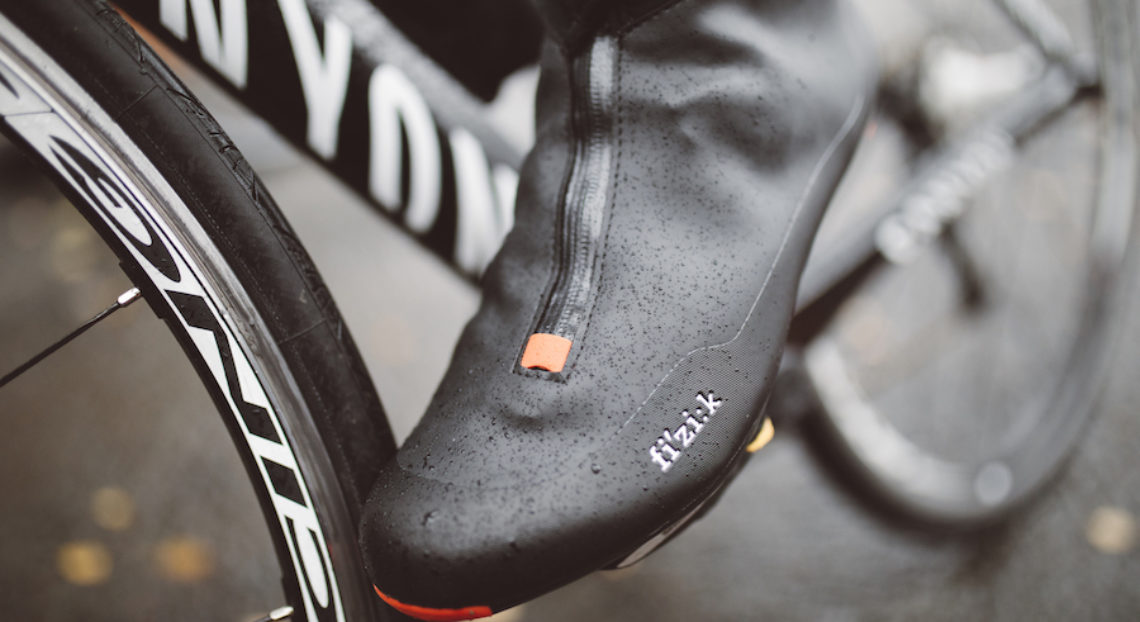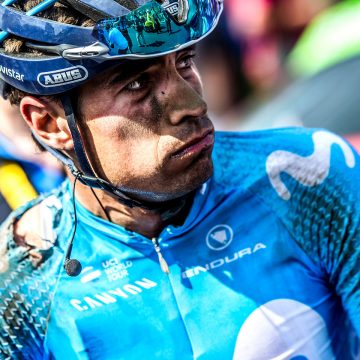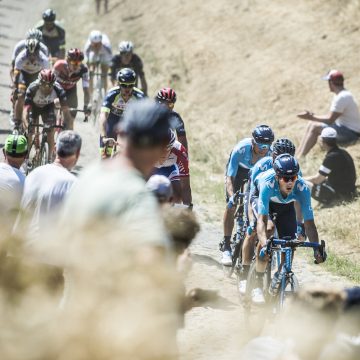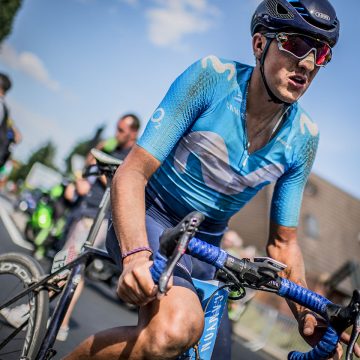When we’re cheering on our pro teams to success in the Classics, Grand Tours and other major races, it’s easy to overlook the precise detail that goes into setting up their bikes so the athletes can perform to the maximum.
Three important aspects of saddle set-up are: selecting the correct profile; measuring the rider’s bike position; and the art of setting up the bike with unerring accuracy every single day for every rider to replicate these vital metrics.
Gianni Moscon and Tour de France winner Geraint Thomas, for example, both suit the long, flat shape and narrow nose of the Arione. This year’s emerging talent, Egan Bernal, ride Antares, with its medium profile, as does Chris Froome; while it’s the waved profile Aliante for his ultra-reliable domestique Philip Deignan, who has just announced his retirement after 14 seasons as a pro.
With their, and their team-mates’ on-bike measurements recorded, we spent time with Team Sky’s mechanics who shared their vital part of the process.
Like all the team’s technical equipment, the measuring calipers they use are highly accurate professional tools, regularly checked – as are the riders’ measurements themselves.
Two sets of measurements that determine saddle height are taken for each rider: from the center of the bottom bracket to two points on the saddle. These positions vary from model to model because of their different profiles and are set to the fraction of a millimeter with the bike secure in a workstand.
The fore-aft measurements are the second set of positions for each rider, and these are also determined relative to the BB.
Advice that all good mechanics will gladly share – but you can imagine the potential consequences if these guys didn’t follow it themselves – is to use the correct torque settings on all bolts. They might make it all look easy, but of course, it’s a highly tuned professional operation that creates that effect!
Winter presents opportunities to train efficiently, such as maximizing your commutes and signing up to an off-season training camp.
COMMUTING BENEFITS
Varying your cycle commute stimulates the greatest gains. Don’t ride hard all the time, you’ll simply become fatigued. Mixing it up means you can boost stamina and speed, depending on your pacing strategy.
If your commute is 10km, for instance, you could cycle 3km easy, 4km hard, 3km easy. Try repeating shorter stints, say 1km, alternating fast and easy. Or ride to work as fast as you can in the easiest gear. If your commute’s shorter, map out some interesting ‘long-cuts’, or try cycling to work fasted, which burns more fat. When you arrive at work, a bagel with peanut butter or jam provides slow-releasing carbs and protein to not only replenish fuel burnt in the morning but refuel for the return commute.
On commutes, like any other winter ride, wear warm clothes with a water-resistant or waterproof outer layer, gloves and footwear – the Artica R5 are waterproof, comfortable and warm, with a foil-layered insulated insole.
WHICH CAMP?
Alternatively, a mid-winter warm-weather training camp will boost your motivation and performance. But what should you look for? Firstly, should you go for an organized camp or plan your own?
Like package holidays, the former is often more expensive, albeit you’ll have your rides planned by a coach, food catered for and often extras such as massage. The latter requires more planning on your part, although it can save you money. It’s also a worthwhile option if there’s a group of you who are knowledgeable enough to plan your training-camp rides via research, Google Maps and even Strava.
What should you expect from an organized camp? Typically, groups will be split by speed, ability and distance. These range from an average 20kph for the lower groups over 60 to 120km, to an average 30-34kph over 100 to 170km for the faster, more experienced riders.
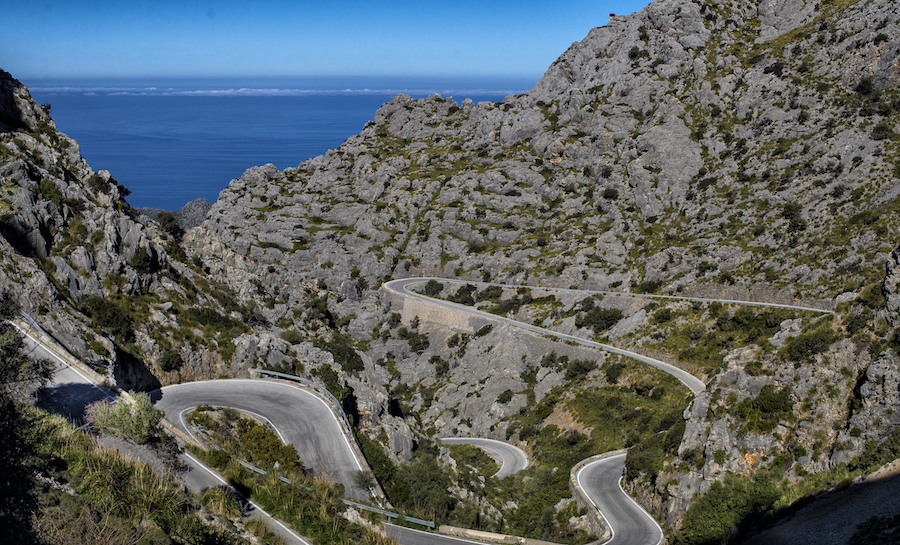
Mallorca, Greece and Gran Canaria are popular venues, as is Club La Santa in Lanzarote. And it’s not just cyclists – there’s also plenty for the active triathlete including a 50m outdoor pool, a saltwater lagoon, and recently resurfaced running track.
Commuting and training camps – the two guaranteed ways to maximize this winter. You’ll be glad come your first granfondo or race of next year.
Watching Fizik and Team Sky’s Geraint Thomas take victory on Alpe d’Huez at this year’s Tour de France, or the world’s best riders facing the mountain stages in the Vuelta a España.
You might think they’re from a different cycling planet. But there are many techniques sportive and granfondo riders can learn from Thomas and his fellow world-class climbers – we’re talking Team Sky’s Chris Froome, Movistar Team’s Alejandro Valverde, Mikel Landa and Nairo Quintana, and AG2R La Mondiale’s Romain Bardet.
SIT OR STAND?
Let’s start with the age-old question of whether to sit or stand.
“For me it’s all about the steepness and length of the climb, the shallower the climb, the faster you go, so you don’t need to stand. It’s also more aerodynamic when you sit. If it’s steep, you can enjoy a brief advantage by standing out the pedals.”
Marco Pinotti – BMC Racing Team’s sports scientist
Science supports Pinotti with Professor Ernst Hansen showing that road cyclists were more efficient when remaining seated until the gradient hit 10%. Then, with red blood cells screaming for more oxygen, standing became more efficient. In fact, during short, all-out bursts, peak power output has been measured at 25% greater when standing compared to sitting. Then again, at shallower gradients of around 4%, ascending at 19km/hr requires 10% less oxygen seated than completing the same distance at the same speed when standing.
Some riders like Thomas (approx 70kg) who are known for remaining in the saddle, attribute their style to growing up racing fixed-gear track bikes where you rarely leave the saddle. However, natural born climber Quintana (approx 58kg), who learnt his technique in the mountains of Colombia, is often out of the saddle. As a broad guide heavier riders benefit from staying in their saddle longer to bear their higher weight; lighter riders can afford to dance out of the saddle longer. Ultimately, as you rack up the miles, you naturally find the mix that best suits you.
POWER & WEIGHT
That issue of weight not only impacts positional choice but also power output. Once the gradient tips over 4-5%, your power-to-weight ratio becomes more important than absolute power. Imagine you’re a 85kg rider and your absolute power is 300 watts. On the flat, you’re more powerful than a 70kg rider whose absolute power is 270 watts. However, on climbs, the lighter rider is faster because their power-to-weight ratio is higher: 3.86w/kg compared to 3.53w/kg. Clearly, weight loss helps here, so aiming for a 1lb loss per week by ‘simply’ expending more calories than you consume.
INTERVALS
Interval hill sets will also burn a huge number of calories, while acclimatising you to the pain of climbs. Mikel Landa’s known for favoring a 15-minute ascent in his Basque homeland that’s not too steep, but can be conquered by riding at a moderate pace for 11mins before riding at threshold for 4mins. He’ll do this four or five times in a 5hr ride to develop the ability to accelerate and recover. You can start by doing this once in a 1hr ride and building up to three efforts in a 3hr ride. Landa is also keen on high-torque, low-cadence work (around 50-60rpm) to build power – it’s a technique you can practise.
HANDS
Be aware of hand position. Looking again at Landa, he’ll vary climbing on the drops, tops and hoods. The drops are faster and often used for attacking; tops are when it’s tougher; and hoods are for easier climbing at moderate pace. Try mixing and matching to suit what you feel is more effective.
Climbing efficiently and quickly will transform your sportive riding. Ultimately, the best way to improve your climbing is to just get out on your bike and ride as many hills as you can.
One of the highlights of recent WorldTour seasons has been the development of the LottoNL-Jumbo sprint train with the team’s main man, Dylan Groenewegen, emerging as one of the world’s most feared sprinters.
Take Stage 7 of the 2018 Tour de France. In the longest stage of the race, the 25-year-old Dutch rider was perfectly positioned by Paul Martens, Amund Grondahl Jansen and, finally, Timo Roosen before choosing Alexander Kristoff’s wheel in the run-in, then coming around the Norwegian with 200m to take the win.
It was a great show of power and skill to watch – but behind that display was planning and preparation.

RIDERS’ ROLES
The sprint train is a complex beast where each rider has a specific role. First up, there’s the ‘controllers’, who determine whether to shut down a breakaway or let them go if it’s small in number and doesn’t include riders from the other teams in sprint contention.
Then there’s the ‘positioners’, who’ll bring their team toward the front of the chasing pack and crank up the pace, taking 1km or 2km turns up front. With around 1.5km before the finish line, the ‘speed pilot’ takes charge.
Next comes the ‘accelerator pilot’ to drive on again from 1km to 500m, before the ‘lead-out’ (Roosen) sprints from around 500 or 600m. The sprinter (Groenewegen) then takes over from typically 200m out.
The sprinter may grab the headlines but to do so he’s often the last link in a well oiled chain.
What the fi’zi:k saddle-riding LottoNL-Jumbo team show us is textbook planning and execution but if you don’t happen to have an elite lead-out train to propel you to the line, there are still many things you can take from this most dynamic show of cycling skills. Primarily, it’s the training that underpins the performance. You’re looking to build explosive power alongside the endurance gained from Sunday morning rides.
HILLS
Hill sprints are ideal. Aim for four to eight efforts of 20-40 seconds each, all seated and all maximal. Shift into the biggest gear you can muster for these sprints, but change right down again for 5 minutes easy riding between each.
TRACK
You can also hit the track. It’s no coincidence that many top sprinters like Groenewegen spent much of their formative careers in a velodrome, the nature of track riding meaning a focus on high-intensity efforts that’ll pay off at the end of a road race. You can also have some fun with your roadie mates, sprinting to the next sign, for example, when traffic means it’s safe to do so.
GYM
You should also hit the gym. As Groenewegen explained at February’s Volta ao Algarve, where he won two stages, ‘A key part of my training are squats.’ For many sprinters, these comprise heavy weights and low repetitions in the winter to build power output; come the summer, when racing’s more frequent, it’s lower weights and more repetitions to add sustainability to the sprints.
NUTRITION
Just remember that building sprint power puts your muscles under greater stress than endurance work, so protein intake is vital to accelerate muscle repair post-session. A quality carb-protein shake is ideal followed by a meal containing protein-heavy foods such as chicken and tuna. And if you really want to go all pro, slip into a pair of compression socks to clear out toxins.
You might not match the speed of WorldTour sprinters like Groenewegen but whatever your size and experience, you can improve your top-end speed. This’ll pay off at every kind of race, from sportives to inner-city crits, and, more importantly, on training rides with your friends.
BE INSPIRED
While this year’s Vuelta a España may have fewer opportunities for sprinters than the first two Grand Tours of 2018, it’s the next great opportunity to watch the masters at work and get inspired.
The Tour de France, featuring five WorldTour teams who use Fizik saddles (Team Sky, Team LottoNL-Jumbo, BMC Racing Team, Movistar Team and AG2R La Mondiale), is the toughest sporting event in the world, made even more debilitating by the heat with temperatures often exceeding 50°C at roadside. This can have severe repercussions for the rider with a core body temperature of over 40°C associated with reduced performance and even sunstroke. The leading professional teams have some advanced techniques for dealing with riding in the heat, many of which we can all share.
ACCLIMATISATION
Acclimatisation – where the rider trains in the heat to stimulate adaptations conducive to racing in the heat – is part of the pro’s armoury for hot weather racing prep. Research has shown that riders exposed to conditions that elevate their core temperature by between 1 and 2°C for 60 to 90 minute sessions over a period of up to 14 days will afterwards elicit a lower resting core temperature, greater blood plasma volume and increased sweating rate – all favorable to riding hard in the heat.
Some northern European riders use a heat chamber in the winter, and there’s evidence that a hot bath (40°C) straight after a cycling session also ultimately lowers core body temperature, resulting in a stronger performance when racing in hot weather.
For most Tour riders, of course, heat acclimation happens naturally. Take Team Sky’s Michal Kwiatkowski, who lives in Poland where temperatures barely rise above freezing during the winter. As his Strava data shows, he still heads out, albeit his winter training also benefits from warmer training camps in Mallorca.
In 2018, the Pole raced Strade Bianche in March in near-frozen conditions. Come late-April’s Liége-Bastogne-Liége the thermometer showed 19°C. The Critérium du Dauphiné in early June saw temperatures in the mid-20s, which rose again come the Tour de France’s Grand Départ in the Vendee on Saturday 7th July. It’s also proven that fitter riders cope better with racing in the heat.
HYDRATION
Hydration is also vital. A study out of California State University showed that a sustained state of dehydration impaired strength, power and high-intensity muscular endurance by 2%, 3% and 10%, respectively. It’s why team doctors monitor their riders’ hydration levels before and after every stage. This involves checking urine color against a chart; dark is dehydrated, light is hydrated.
Around 1kg fluid loss should be replaced with 1.5 litres of fluid (taking into account the fluid lost through urination), and this should include electrolytes lost in sweat, especially sodium, which helps with transferring water from the bloodstream to the working cells. It’s why an outfit like Team Sky fill bottles with blue tops with water containing electrolytes, while bottles with white topped bottles include carbohydrates for energy.
CLOTHING
Thinner clothing equals cooler but that reduces UV protection. Suncream helps but is often washed off through sweat, so Team Sky’s clothing for racing in the heat features titanium dioxide, which has reflecting properties. It’s the same active ingredient as in many suncreams.
For all pro teams, clothing’s constructed from polyester, which absorbs very little water – around 0.4% of its weight. That’s thanks to its efficient wicking properties, where sweat is transferred from the body to the open air. It’s a material benefit we can all share with the professionals.
Grand Tour riders often use pre-cooling strategies, too, such as ice vests (you might have seen BMC Racing Team riders wearing these as they ‘warmed up’ for the Tour de France’s Team Time Trial) and there’s plentiful consumption use of ice slushies, all in the name of lowering core body temperature to improve performance in the heat – that’s another hot weather riding tip many of us will happily share with our heroes.
They say climbing never gets easier, you just get faster – and who better to ask how, than one of the best riders in the pro peloton, Movistar Team’s Mikel Landa.
fi’zi:k joins forces with the Global Cycling Network in this video to get the inside knowledge from a man who’s climbing prowess really needs no introduction – stage wins at the World Tour, multiple stage wins and third at Giro d’Italia, and fourth overall at last year’s Tour de France. To set your sights on that mountain segment, watch the video below.

